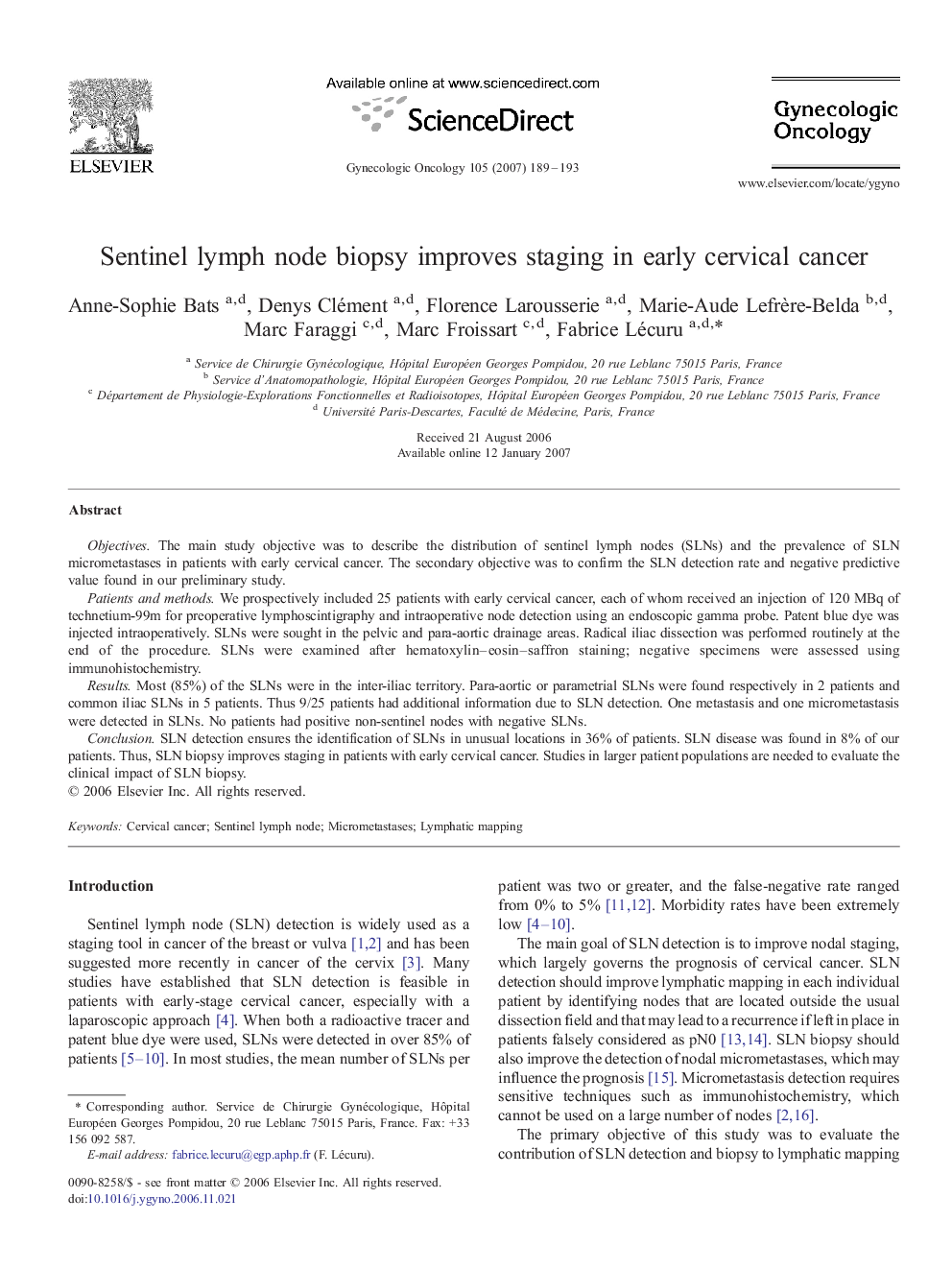| Article ID | Journal | Published Year | Pages | File Type |
|---|---|---|---|---|
| 3944977 | Gynecologic Oncology | 2007 | 5 Pages |
ObjectivesThe main study objective was to describe the distribution of sentinel lymph nodes (SLNs) and the prevalence of SLN micrometastases in patients with early cervical cancer. The secondary objective was to confirm the SLN detection rate and negative predictive value found in our preliminary study.Patients and methodsWe prospectively included 25 patients with early cervical cancer, each of whom received an injection of 120 MBq of technetium-99m for preoperative lymphoscintigraphy and intraoperative node detection using an endoscopic gamma probe. Patent blue dye was injected intraoperatively. SLNs were sought in the pelvic and para-aortic drainage areas. Radical iliac dissection was performed routinely at the end of the procedure. SLNs were examined after hematoxylin–eosin–saffron staining; negative specimens were assessed using immunohistochemistry.ResultsMost (85%) of the SLNs were in the inter-iliac territory. Para-aortic or parametrial SLNs were found respectively in 2 patients and common iliac SLNs in 5 patients. Thus 9/25 patients had additional information due to SLN detection. One metastasis and one micrometastasis were detected in SLNs. No patients had positive non-sentinel nodes with negative SLNs.ConclusionSLN detection ensures the identification of SLNs in unusual locations in 36% of patients. SLN disease was found in 8% of our patients. Thus, SLN biopsy improves staging in patients with early cervical cancer. Studies in larger patient populations are needed to evaluate the clinical impact of SLN biopsy.
